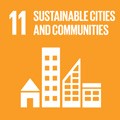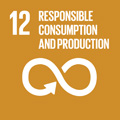- Docente: Rosa Smurra
- Credits: 6
- SSD: M-STO/01
- Language: English
- Teaching Mode: In-person learning (entirely or partially)
- Campus: Bologna
- Corso: Second cycle degree programme (LM) in Building Engineering -Architecture (cod. 5697)
Learning outcomes
At the end of the course, students will: - understand the significance of urban environments through the transformations that occurred over time in relation to various political and institutional phases; - have a comparative view between Italian and European cities through specific examples; - be able to use sources such as aerial photos of urban settlements to identify the stages of their development from antiquity to the present; - recognize the reasons for the shaping of Europe's cultural heritage and in particular its historical urban landscape.
Course contents
Cultural Heritage offers a bridge between the past and the future by means of the present. The importance of cultural heritage to the economic and social development of urban areas is specifically important in Europe, where the population and the economy are increasingly concentrated in urban areas. The course investigates the formation of the concept of cultural heritage in historical perspective and European geographical spectrum. It also dwells on the cases of destruction of cultural heritage occurred throughout history. Starting from the shaping of urban landscapes through the ages, the course also addresses the heritage values of urban space, which are overall values derived from the integration of different components.
Readings/Bibliography
Brumann, C. (2015). Cultural Heritage. In J. D. Wright (Ed.), International encyclopedia of the social and behavioral sciences (2. ed., pp. 414-419). Amsterdam: Elsevier.
Reconnecting the city: the historic urban landscape approach and the future of urban heritage, editors F. Bandarin and R. van Oers, Oxford: Wiley Blackwell, 2015
Further readings are provided on Virtuale platform.
Teaching methods
Teaching is by a combination of class lectures, seminars and visits to historical places in Bologna and beyond.
Assessment methods
Final exam will evaluate the student's ability to explain and discuss critically the facts and analytical questions examined during the class lectures and in the bibliography.
Teaching tools
Sources, images and maps visualization.
Office hours
See the website of Rosa Smurra
SDGs


This teaching activity contributes to the achievement of the Sustainable Development Goals of the UN 2030 Agenda.
